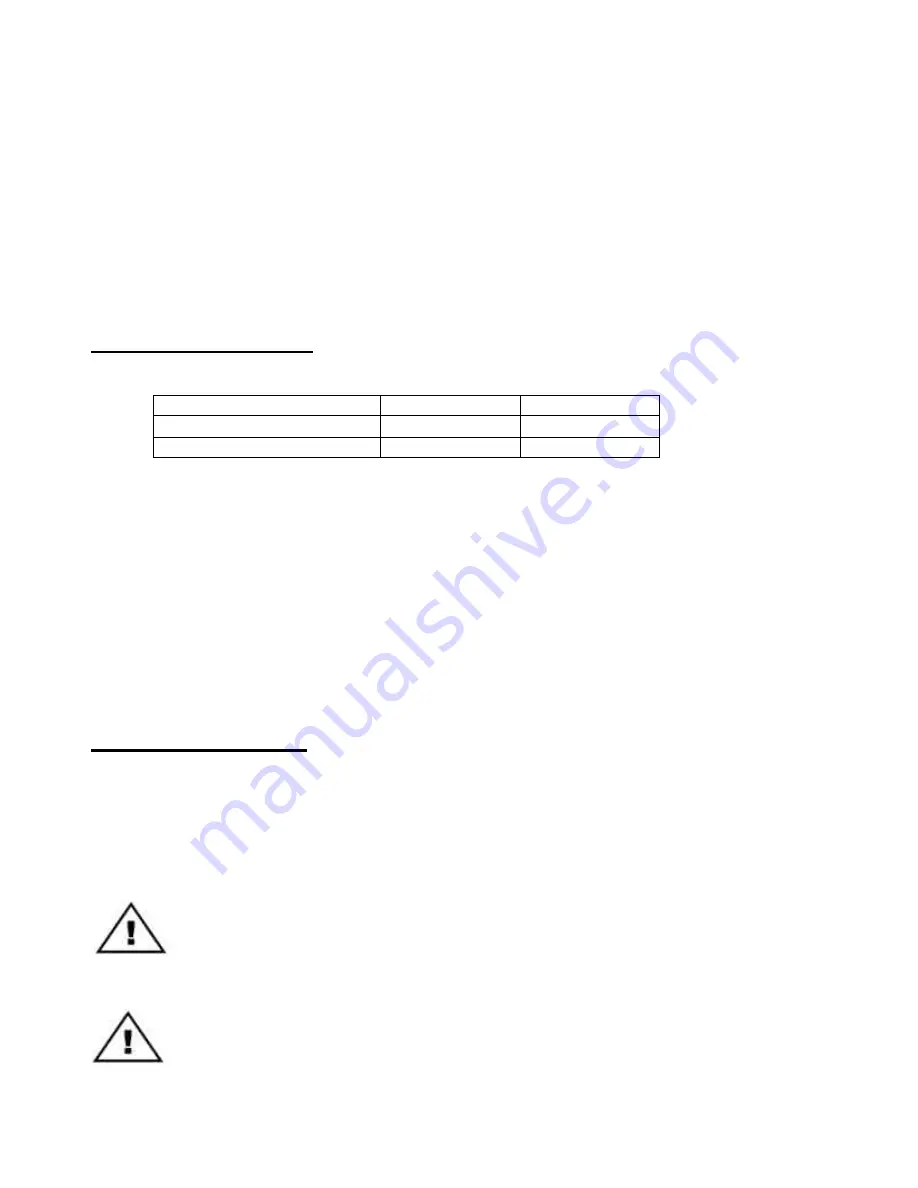
PVI 1800/PVI 2500
Installation and Operation Manual
18
•
Approximately 0.40 ? for a 100 feet (76.2 m) 12 AWG conductors
•
Approximately 0.24 ? for a 100 feet (76.2 m) 10 AWG conductors
•
Approximately 0.15 ? for a 100 feet (76.2 m) 8 AWG conductors
•
Conductor impedance of < 0.40 ? is recommended
The total impedance phase to phase of the grid plus the interconnecting AC conductors should be less
than 1.2 ? .
Suggested DC Disconnects: 600V DC, 30A, 1-3 Circuits
Part Number Manufacturer
Rainproof NEMA 3R
HU361RB
Square D
3 circuit, fused version
H361RB Square D
Rain proof NEMA 3R
THN2261RDC
GE
For some installations code-c ompliance may include indoor, NEMA 1 rated disconnects which are also
available (typically less expensive). Also, for lower power/lower voltage configurations in which the
maximum OCV (Open Circuit Voltage) of the PV array in cold weather extremes is less than 250V DC,
per NEC690-7 (1.25X PV OCV, for example) it may be adequate to use 250V DC rated disconnects as
well.
The PVI 1800 and PVI 2500 inverters are not capable of back-feeding currents into the PV array from the
AC source including into short circuit(s) or fault(s) in the PV array or string(s). This allows some
flexibility regarding PV string configurations including parallel strings with and without string fusing. If
string fusing is required, for example on a large 2-3 string system, the fused H361RB disconnect can be
used. No separate fused PV combination is required. Refer to Square D Data Bulletin 3136DB0301
5/2003 for information. There are many one and two string configurations that do not need fusing.
PV String Configurations:
There is a huge number of PV module string combinations that will work well with the PVI 1800 and PVI
2500 inverters given the very large DC voltage range in which the inverter can operate. See string sizing
in Appendix C for several examples.
Connecting the DC (PV) Inverter Wire:
WARNING:
Follow PV module manufacturer’s directions. PV-arrays produce electrical
energy when exposed to light and could create a hazardous condition. (One method used to
assure safety from shock is to completely cover the surface of all PV -arrays with opaque /
dark material before wiring them.)
WARNING:
Before connecting the connectors of the PV-panel to the DC disconnect
enclosure and before connecting the DC inverter wire, check the correct polarity and
admissible PV-panel voltage between the (+) and the (-) cable connectors of the PV panel.
















































